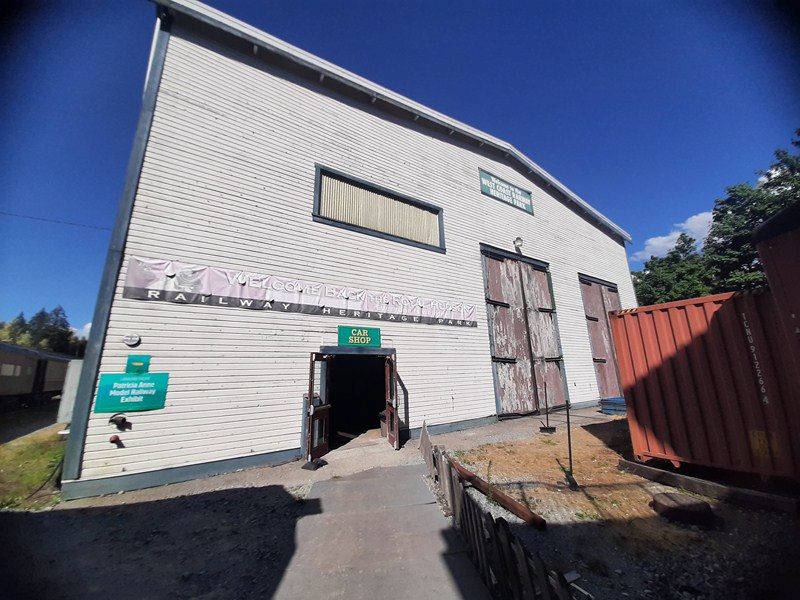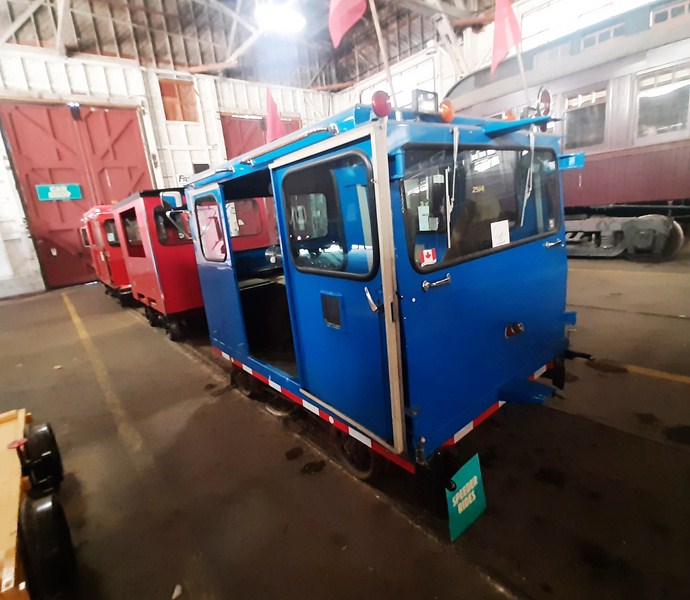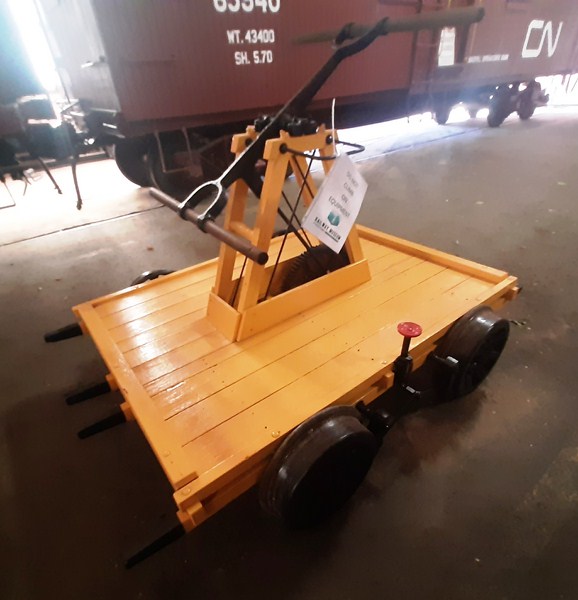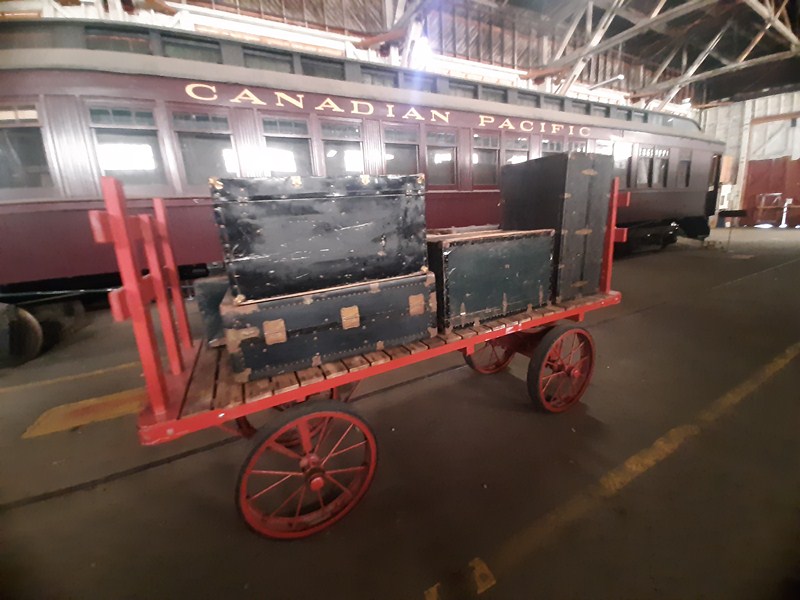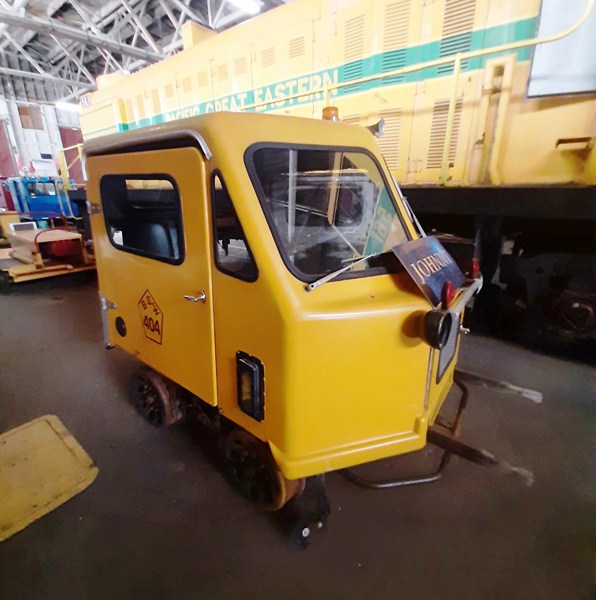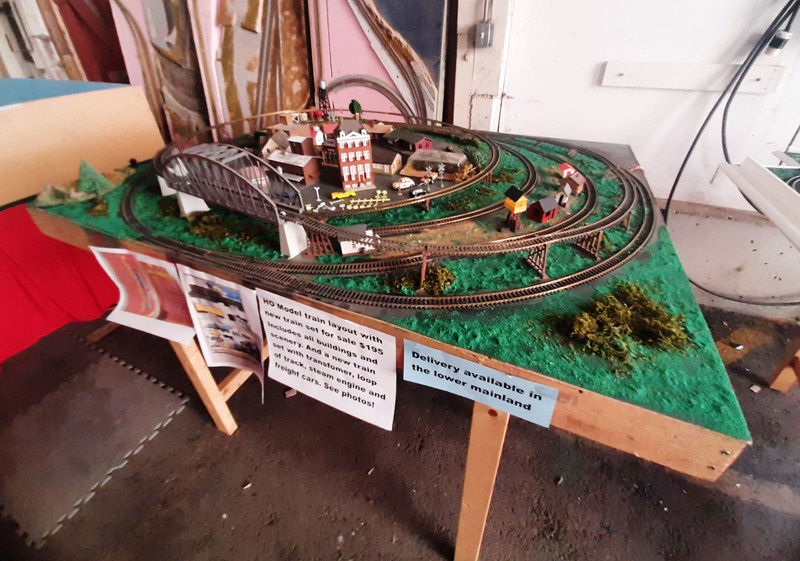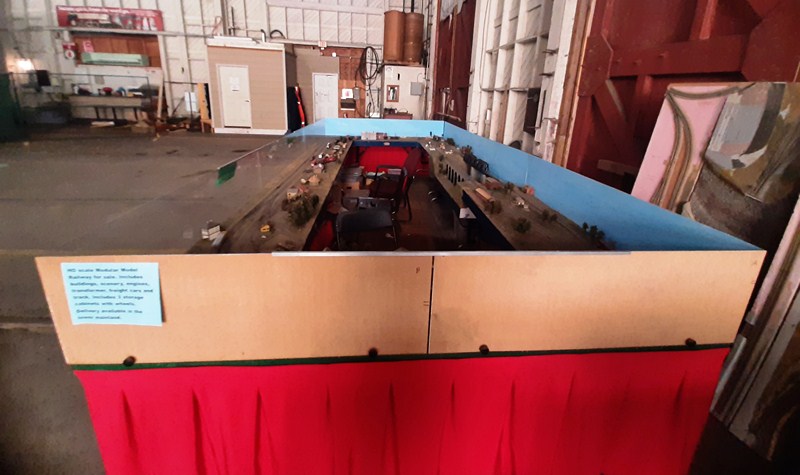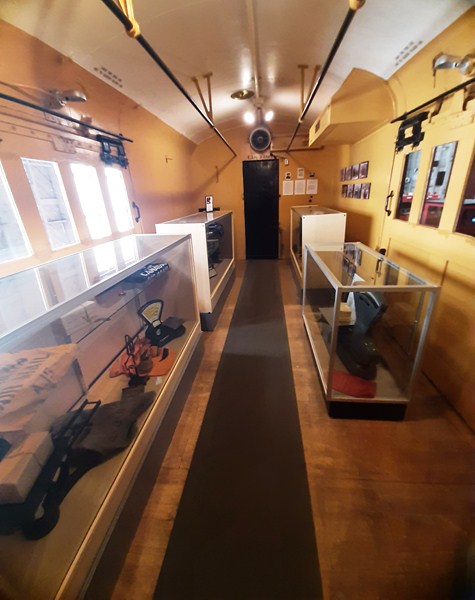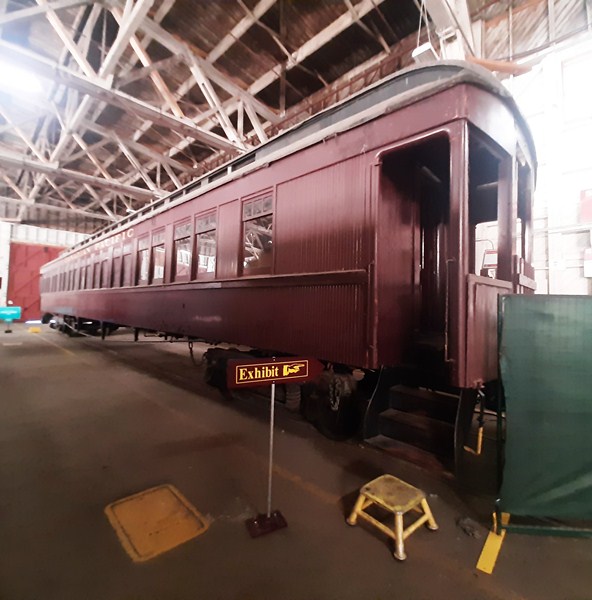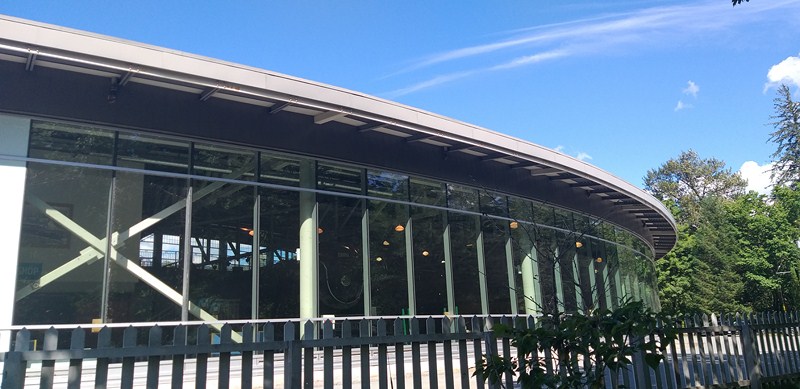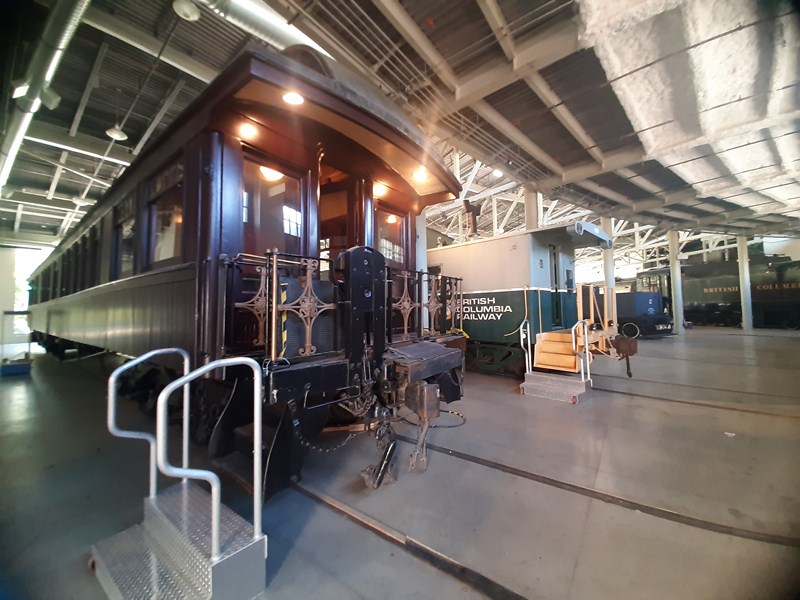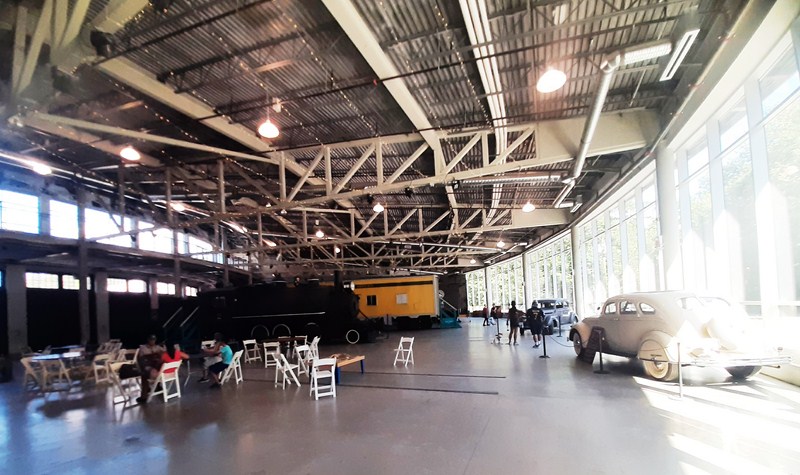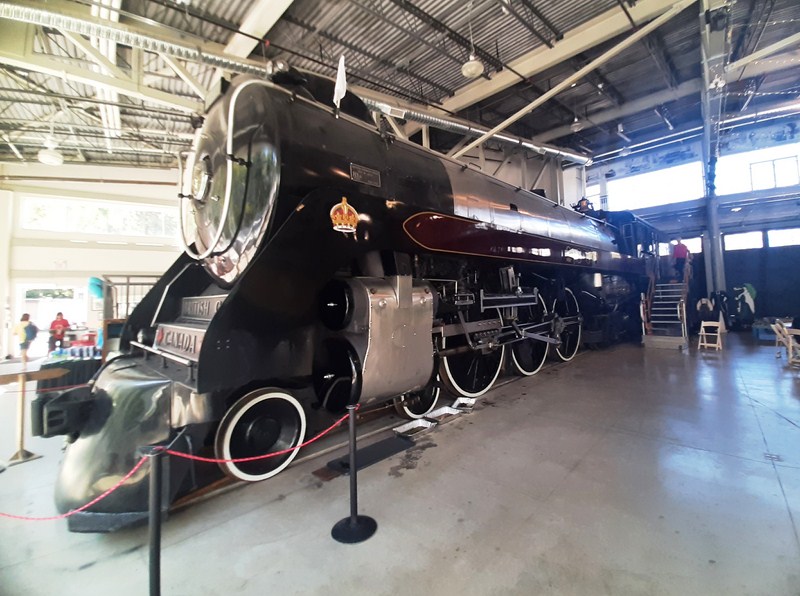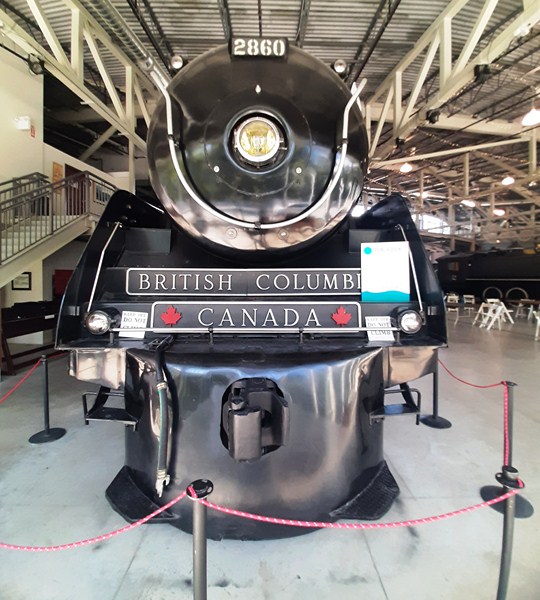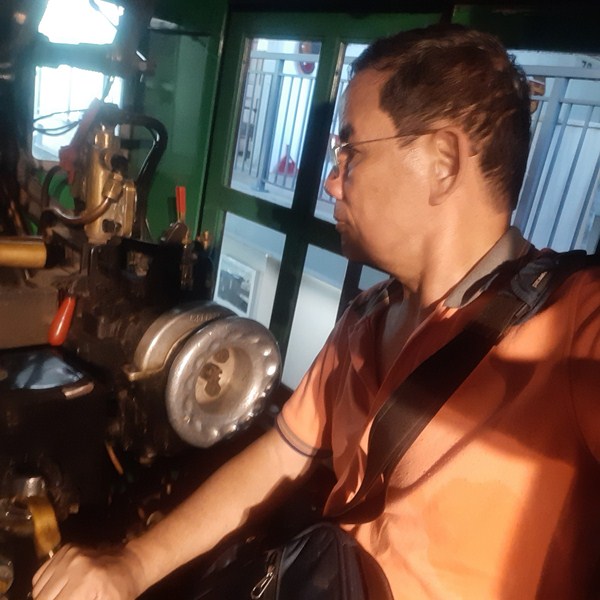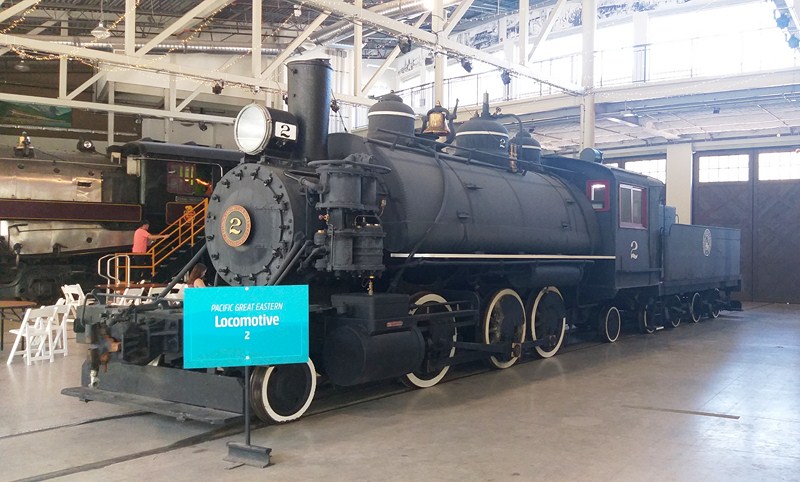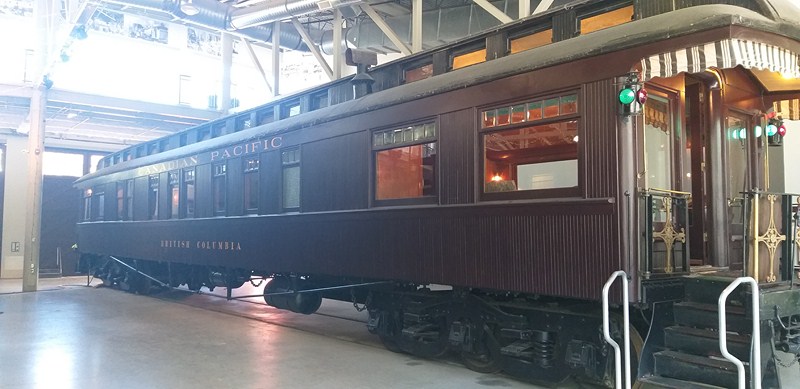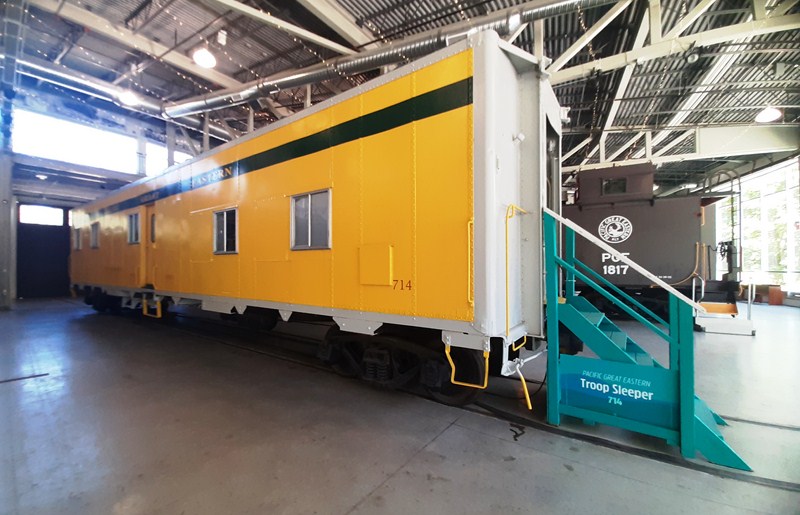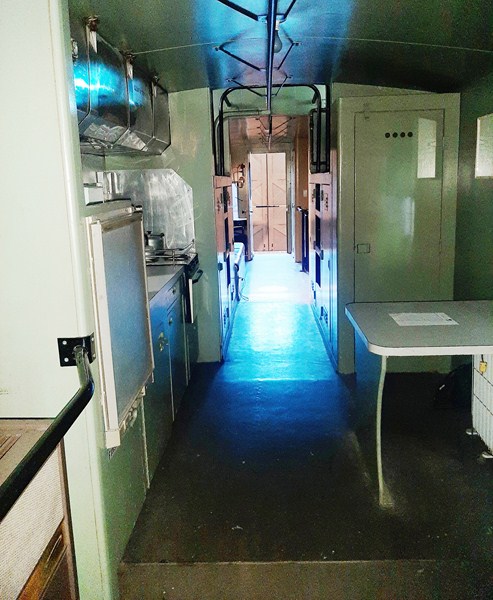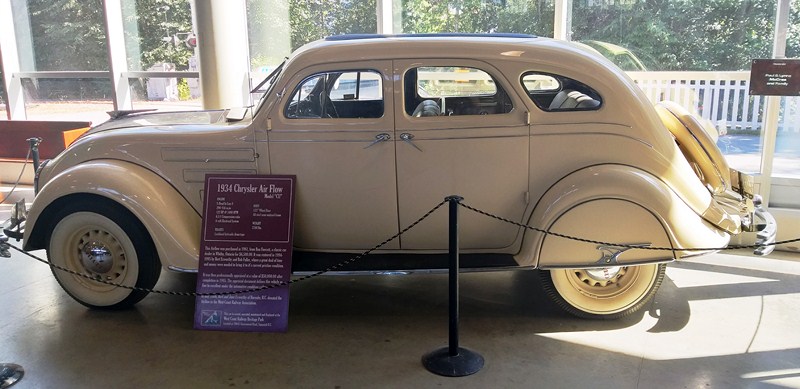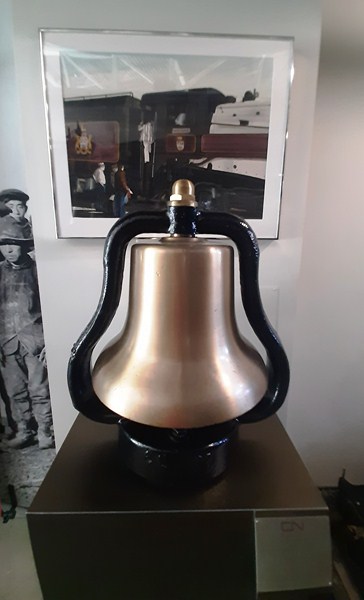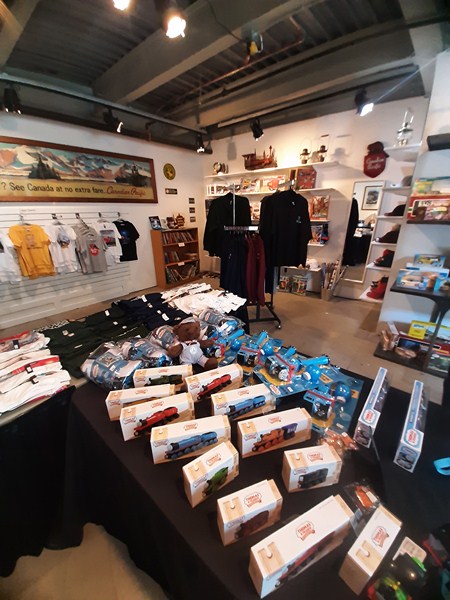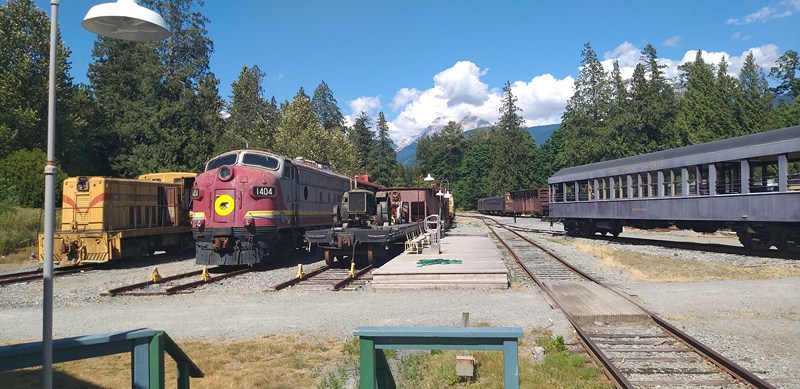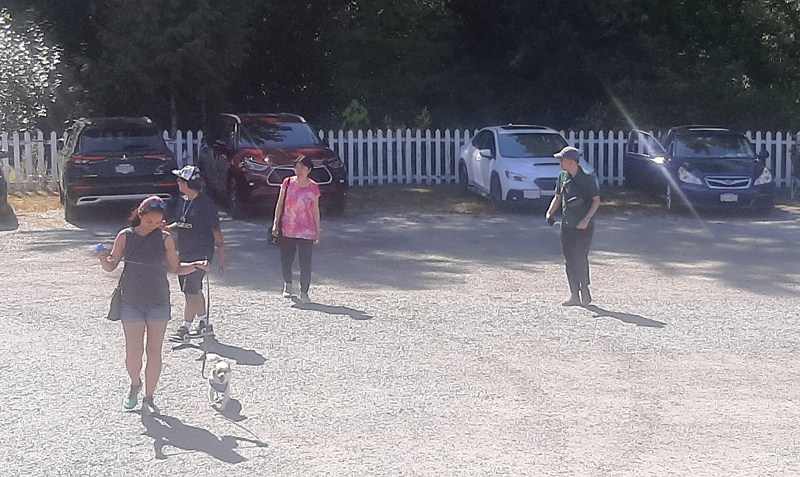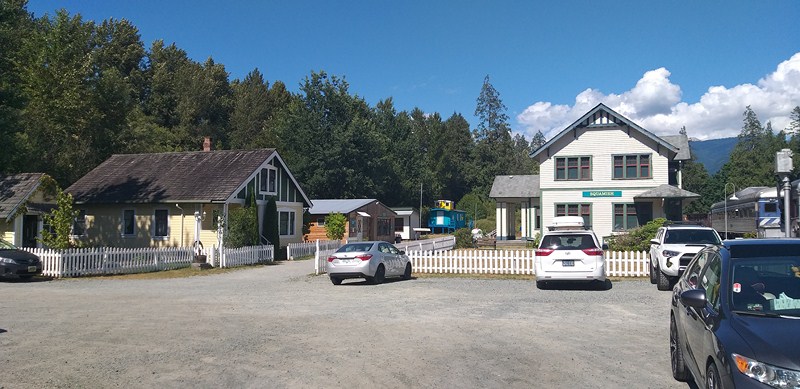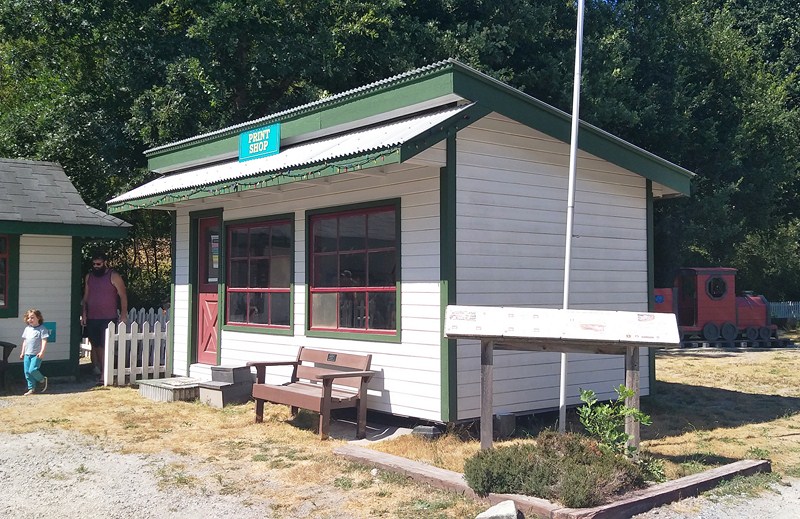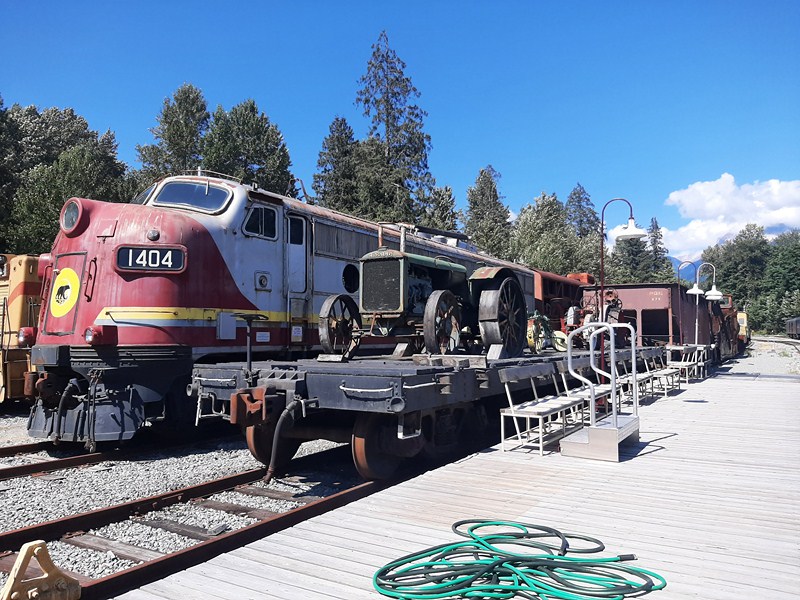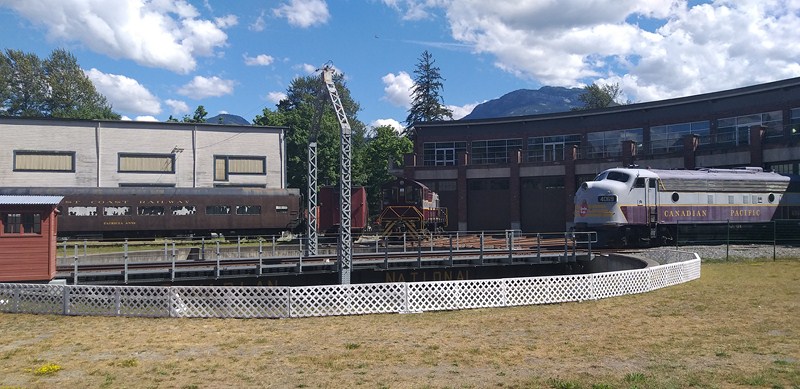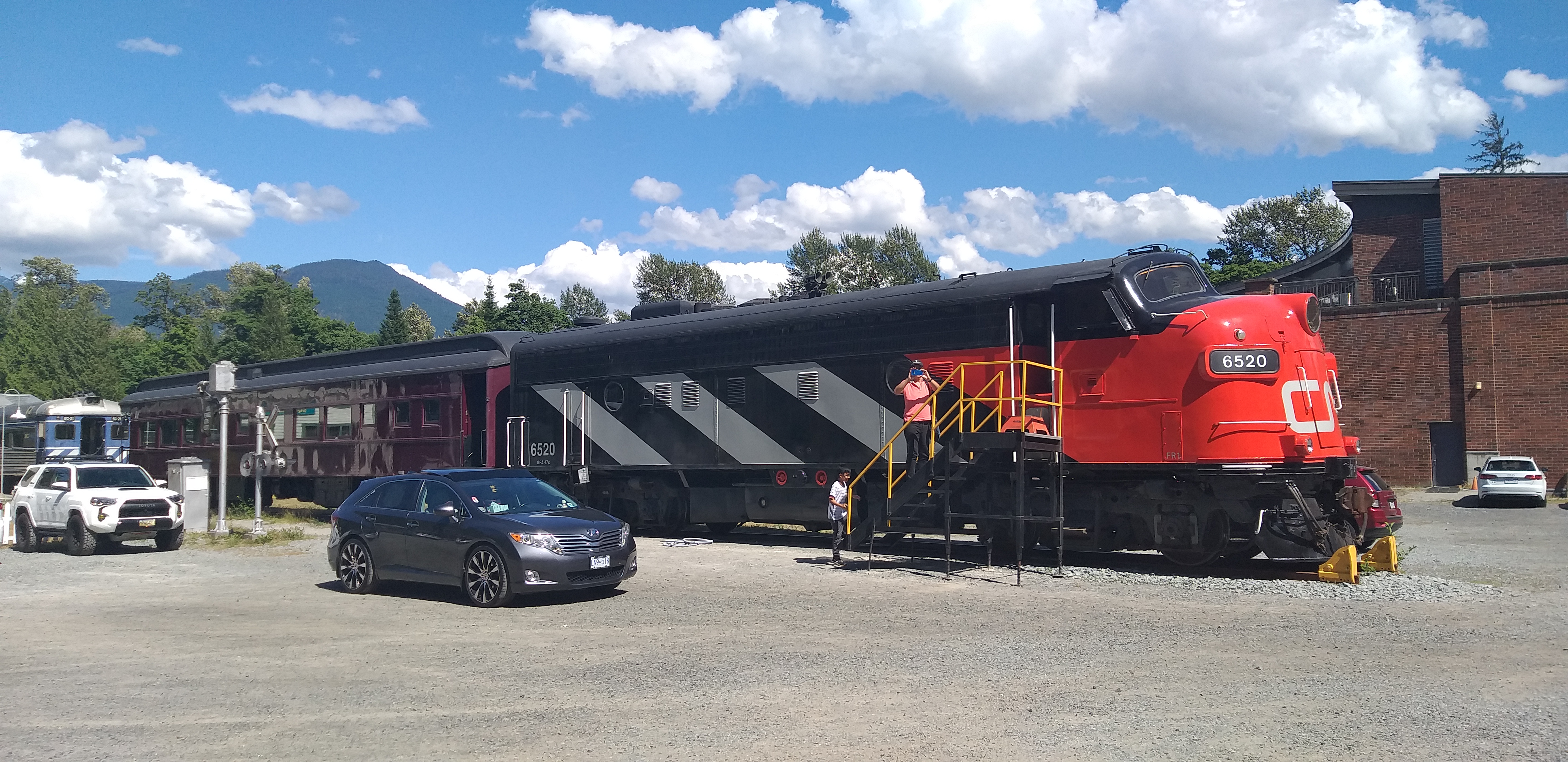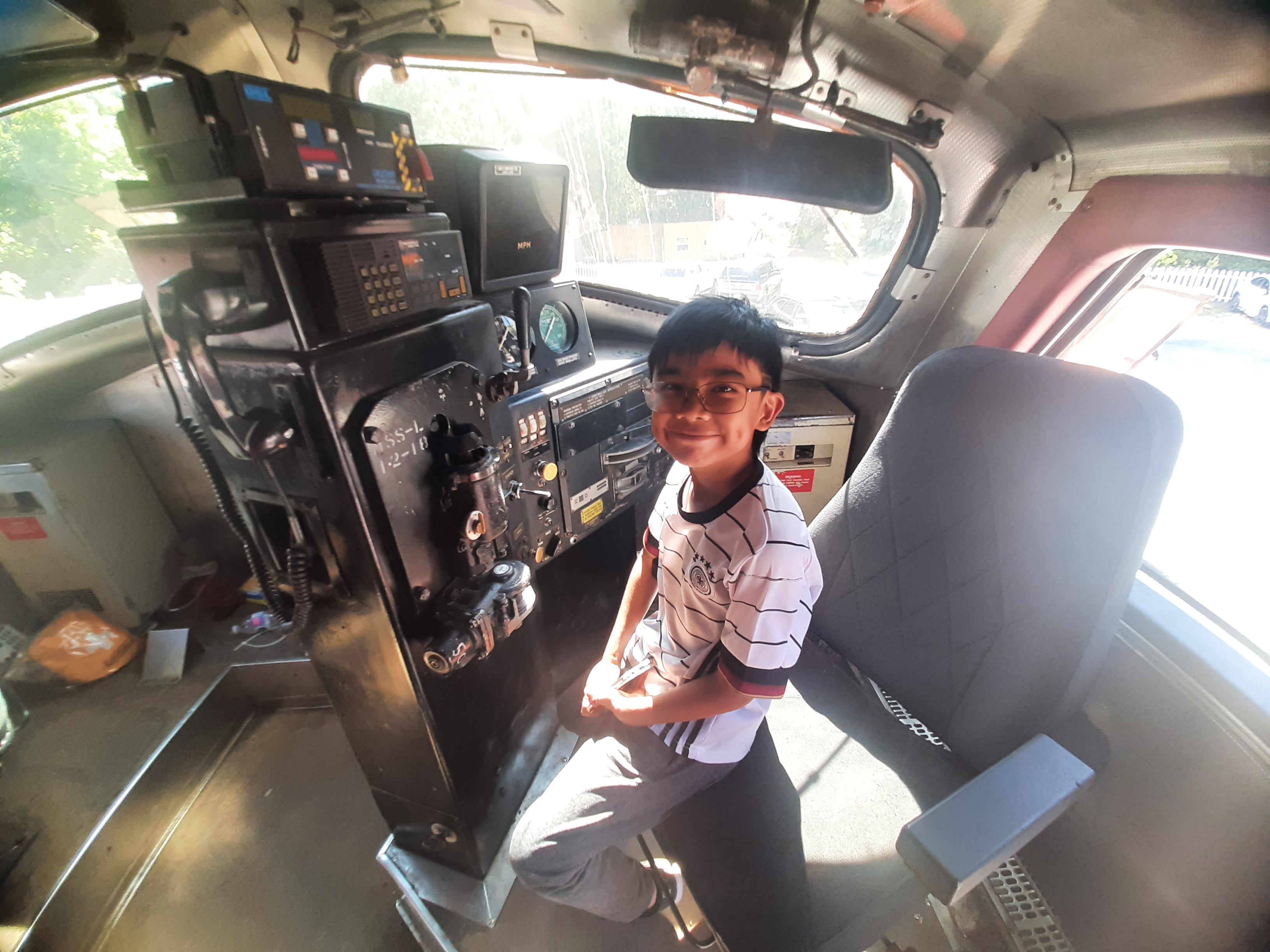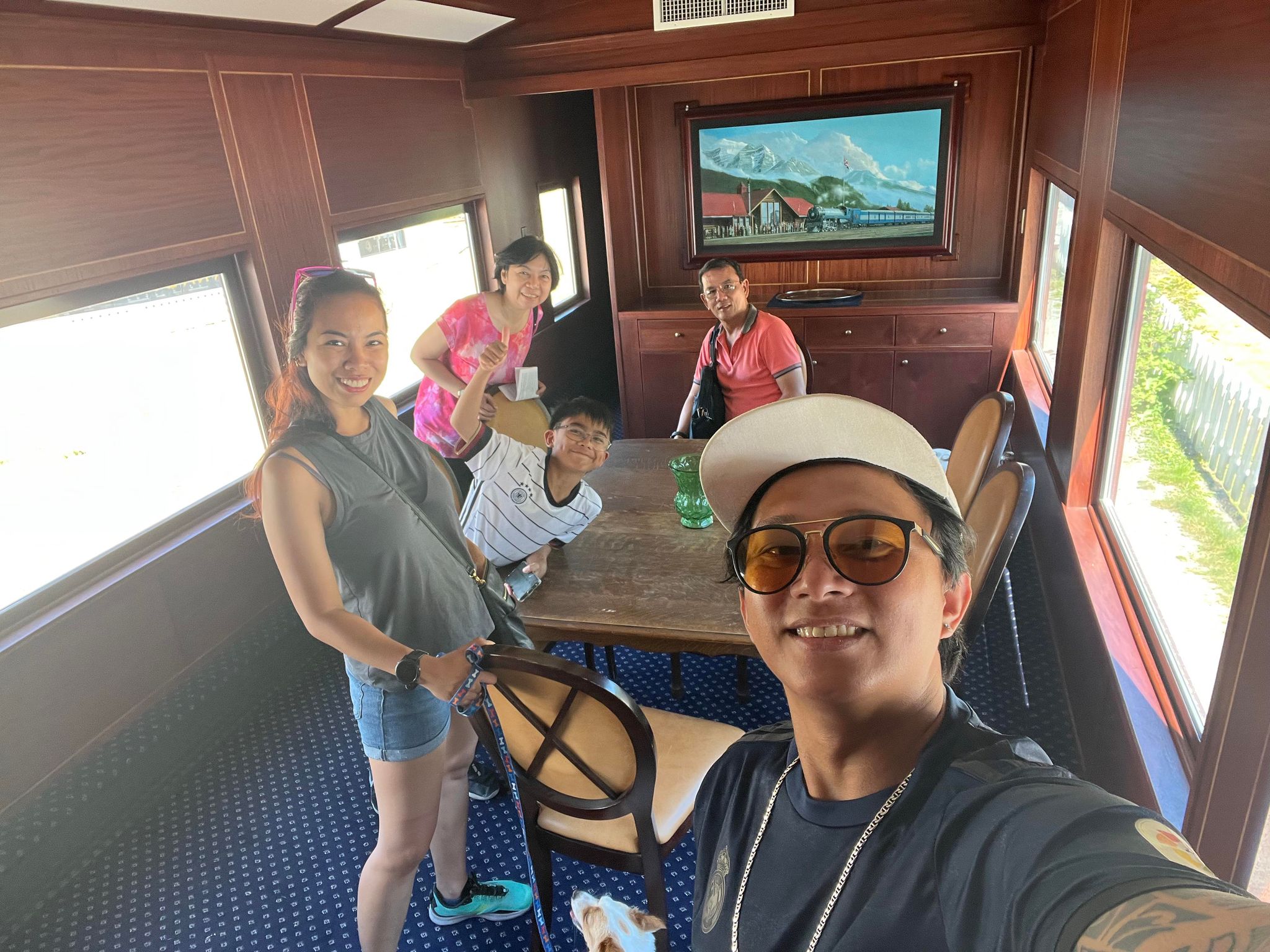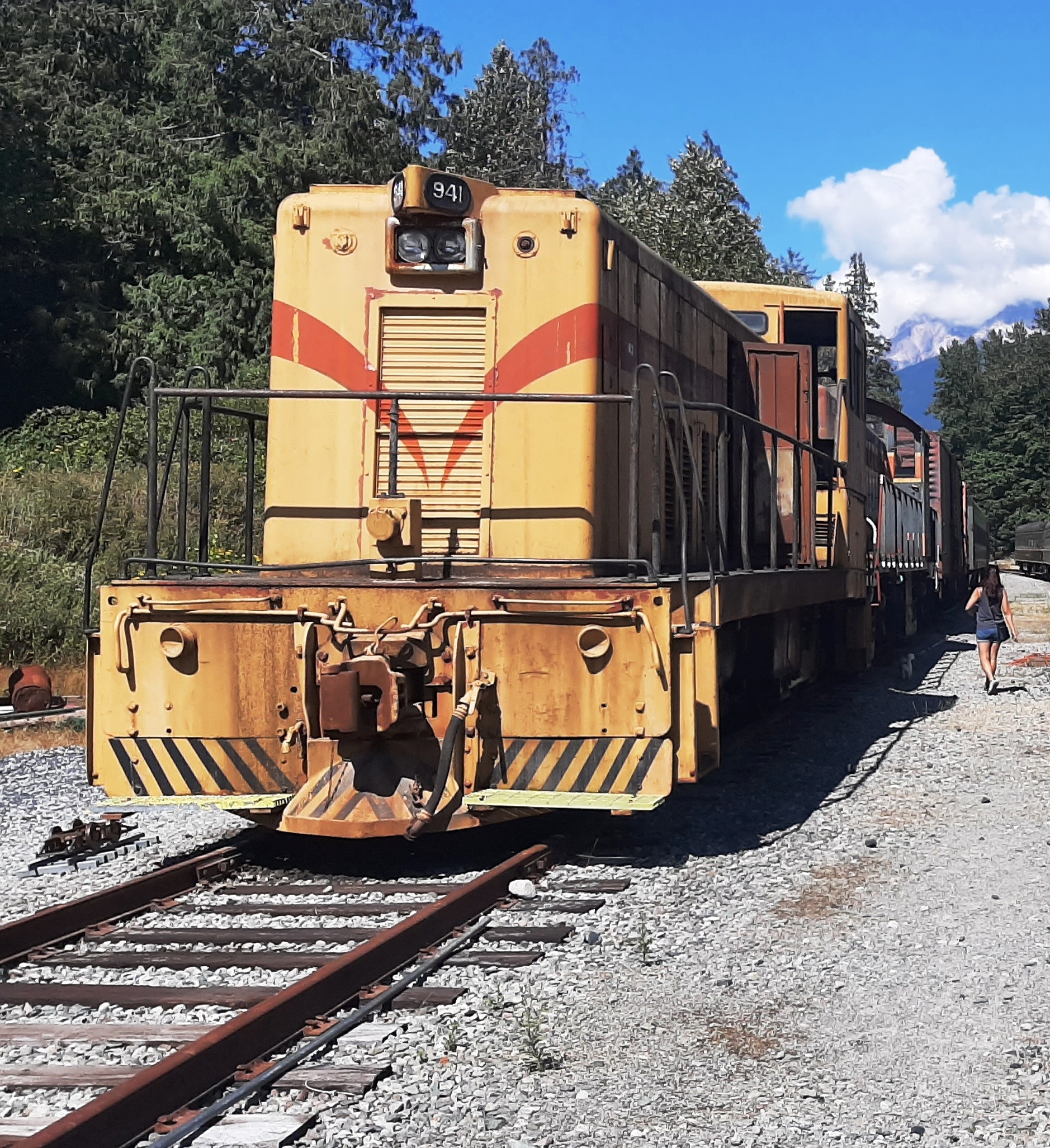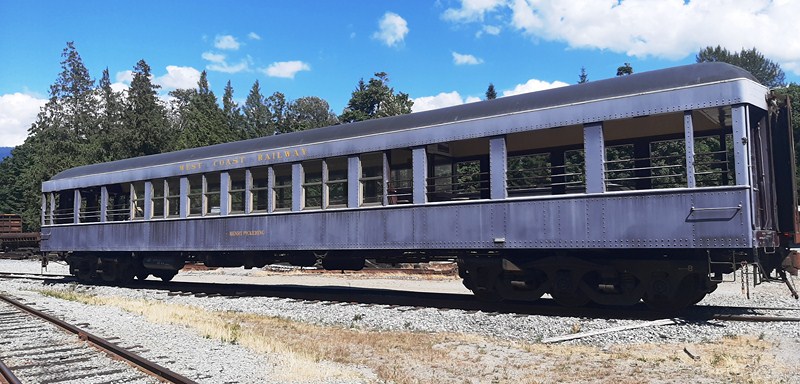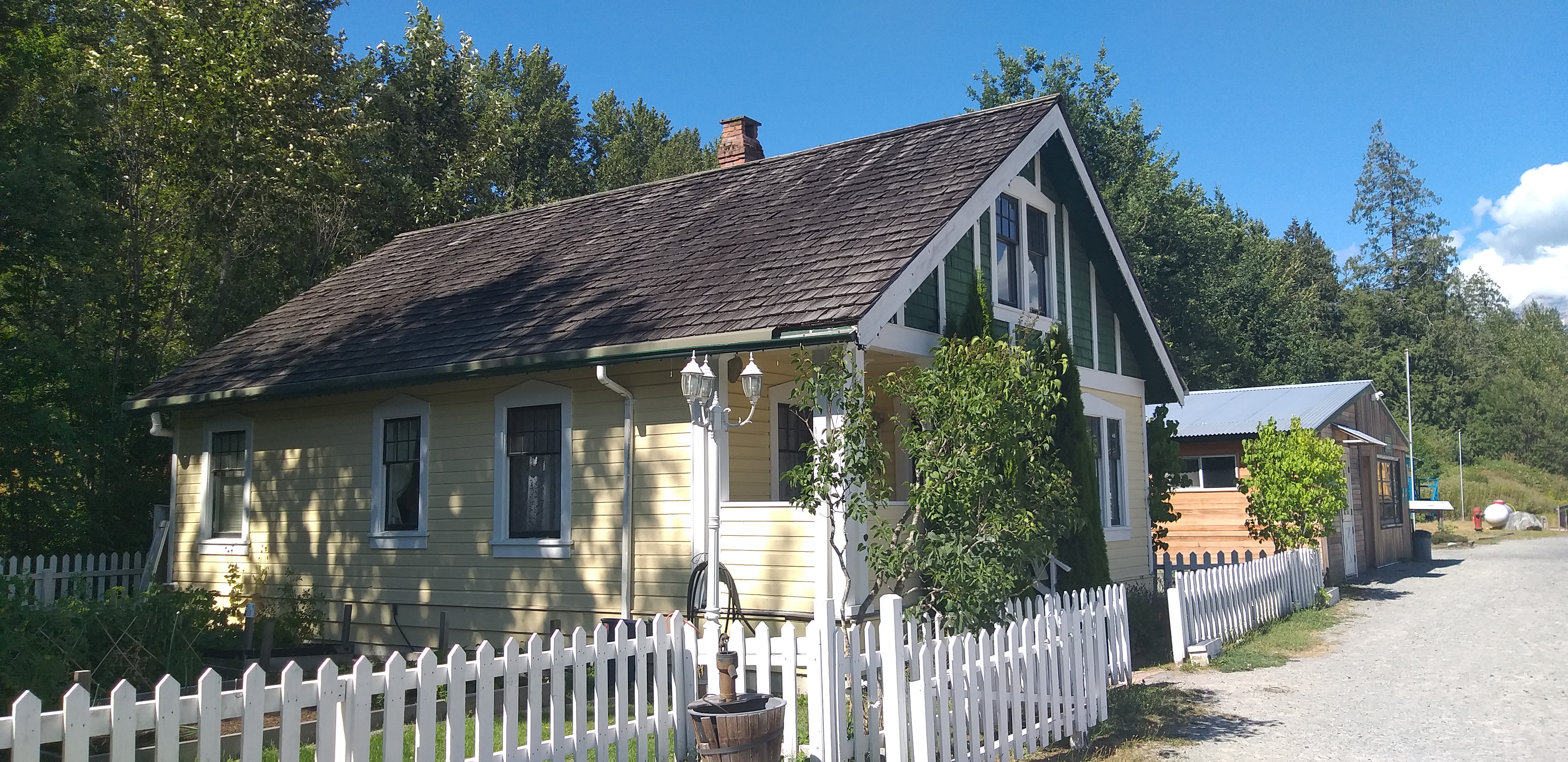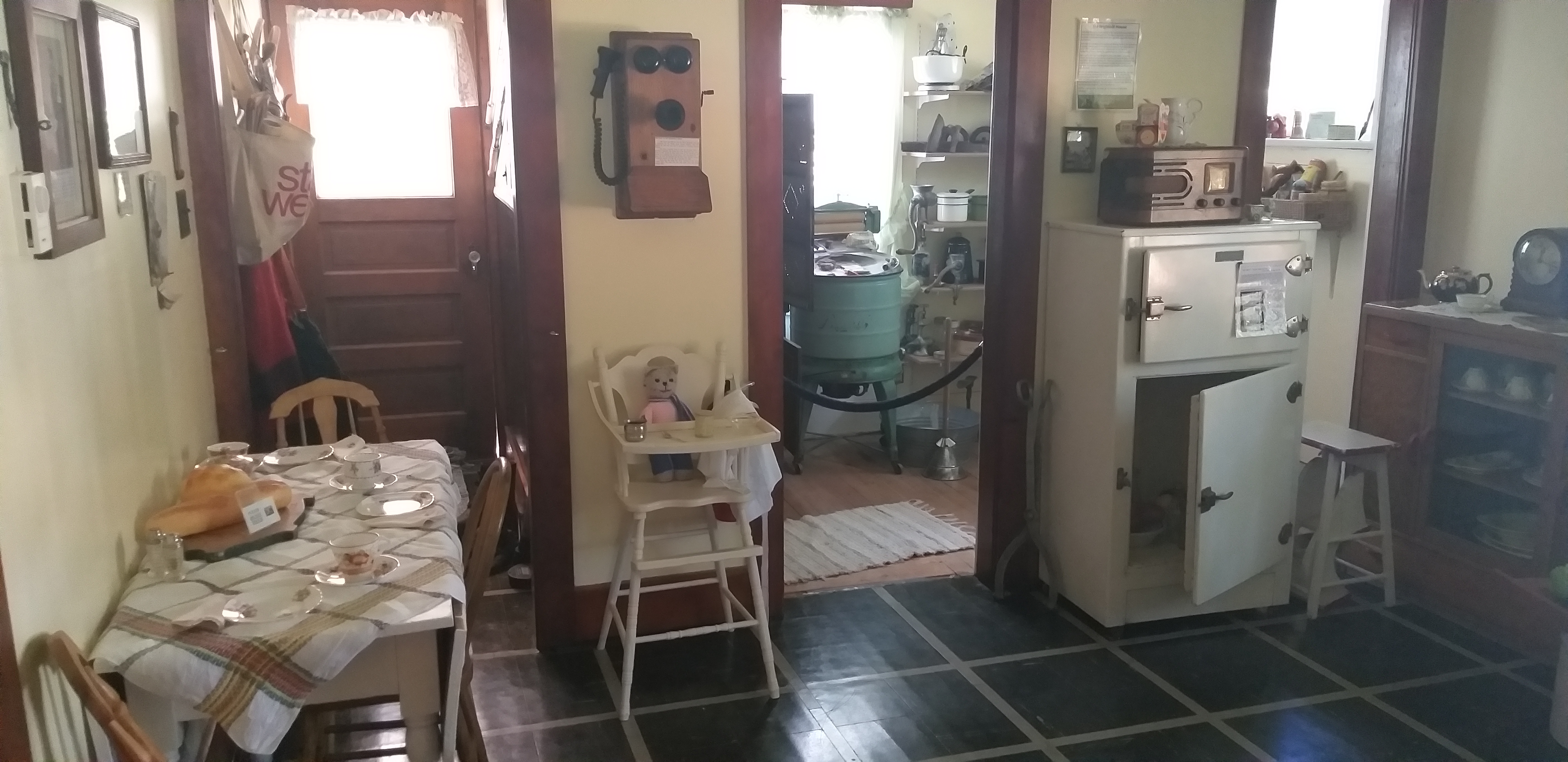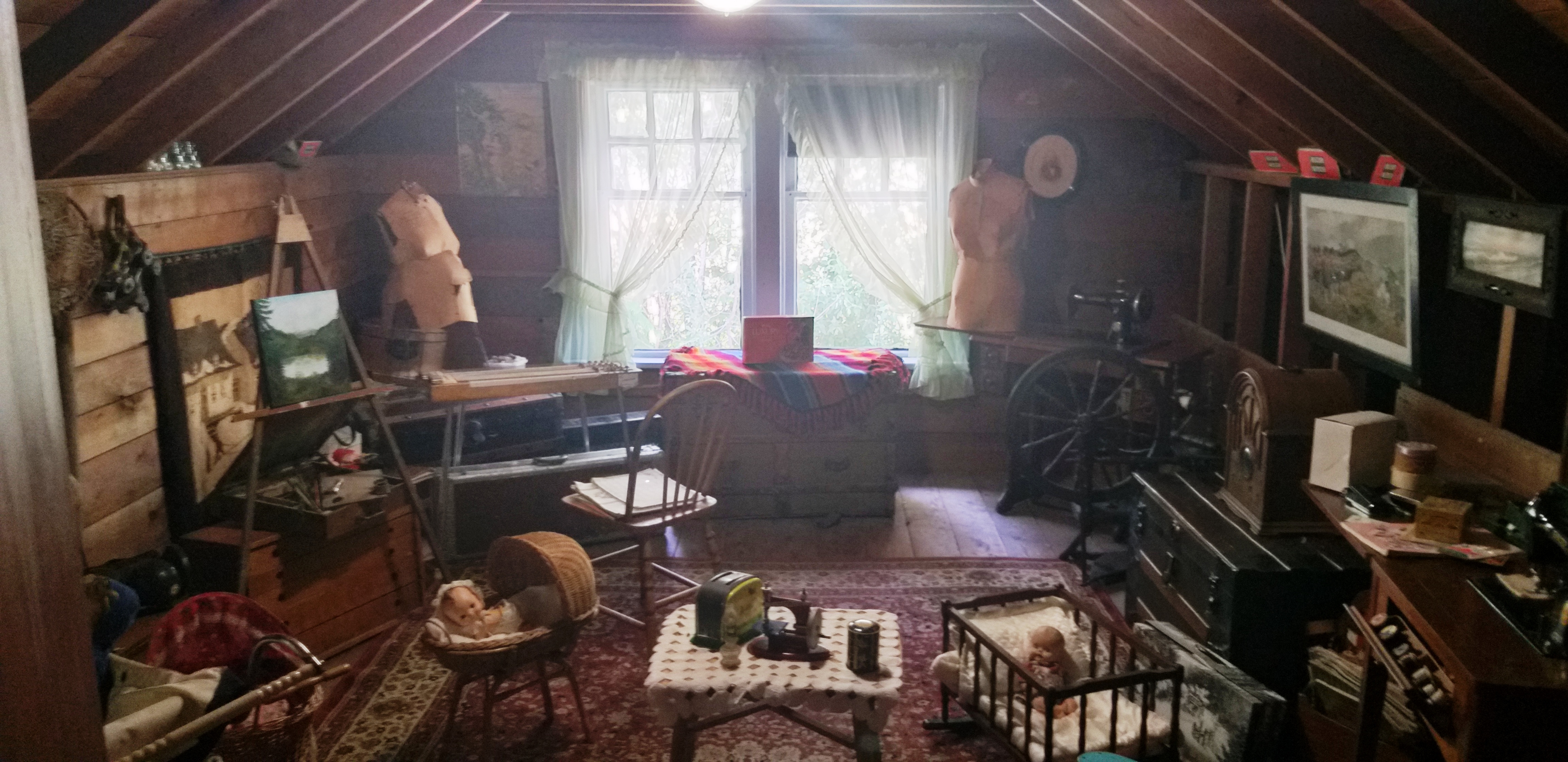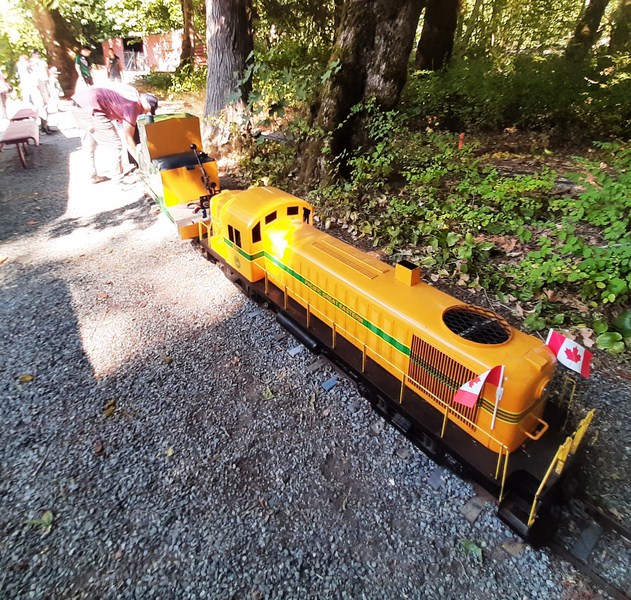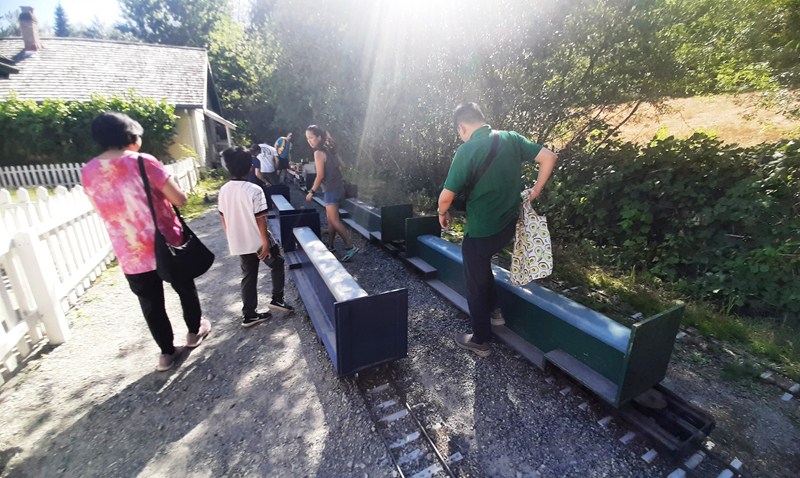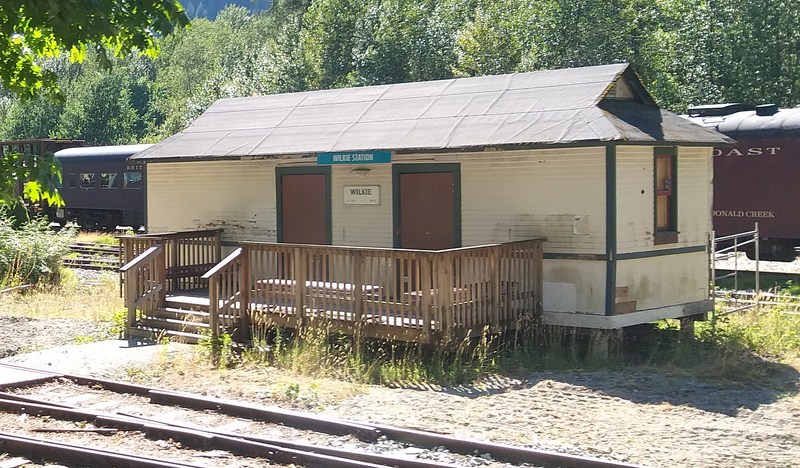From the CN Roundhouse and Conference Center, I walked over to the historic Pacific Great Eastern Car Shop.
Check out “Railway Museum of British Columbia: CN Roundhouse and Conference Center“
Built in 1914, it was moved to the RMBC in 1994, the largest building ever moved in one piece in Western Canada.
Today, it is home to a 15-ton overhead crane. You can view restoration work in progress as well as some exhibits.
Housed within is a CP 2514 Colonist Car (one of a few still around today), CPR Baggage Mail Car 3704 and Pacific Great Eastern RS3 Diesel 561 locomotive.
Also on display here are a pump car, a railway scaled model, a luggage wagon, a mail delivery van, a scale HQ modular model and a speeder car (once used as motorized maintenance vehicles to transport crews to their worksites along the tracks).
The CPR Baggage Mail Car 3704, built in 1949, has a 50’ baggage compartment and a 30’ mail compartment. BC Rail bought the car from CPR for work train service but never converted it. In 1998, the WCRA acquired the car for preservation and it was restored by a team of Canada Post volunteers.
Now representing a typical working mail car, No. 3704 was part of a group of 10 cars rebuilt from standard Baggage mail cars in the 3600 series.
The CP 2514 Colonist Car, built in 1905, is one of a very few Colonist sleeper cars still around today. Built to carry settlers, mostly European, to settle in Western Canada, passengers spent 4 to 5 days in the car travelling across Canada.
The last mainline services these cars saw was carrying troops during World War 2. Very uncomfortable and often overcrowded, it had hard wooden slat seats for 50 passengers, but they would, at times, carry 100 passengers, with people often having to sit on the floor or stand.
At each end of the car were coal stoves for heat and to allow passengers to cook meals (passengers would have to bring their own food and cooking utensils).
There were also some pull down sleeping berths (passengers had to supply their own bedding) and washing facilities at each end of the car, one for women and the other for men.
The Pacific Great Eastern RS3 Diesel 561, built in 1951 by Montreal Locomotive Works, putting out 1600 HP, is a freight workhorse frequently seen in service at the park, switching trains in and out of the round house and turntable. This locomotive, representing the first “road” diesels operated by the PGE, was in service for over 35 years before being retired and acquired by the museum.
Railway Museum of British Columbia: 39645 Government Road, Squamish, British Columbia V8B 0B6. Tel: 604-898-9336. E-mail: Info@wcra.org. Website: www.wcra.org. Open every Saturday and long weekends, Sundays all summer, 10 AM – 5 PM, select Thursdays, 10 AM – 3 PM. Group Tour events Special Access. Admission (plus taxes): ($25 (adults, 19–59 years), $20 (seniors, 60+ years), $18 (students ages 12+), $10 (children, 6-11 years), $75 (family, where members must reside at the same address). Toddlers, under 5 years of age, are free admission. Admission tickets usually include all rides and activities.
How to Get There: the museum isn’t so easy to find unless you have a good map or GPS. Driving past the main intersection with Petro-Canada, 7-Eleven & McDonalds, turn left at either of the next two exits (Industrial Way or Commercial Way) then turn right on Queens Way and follow that a short distance until it merges with Government Road at the stop sign. Proceed across the BC Railway Crossing (after looking both ways). The entrance to the museum will be on your right.

